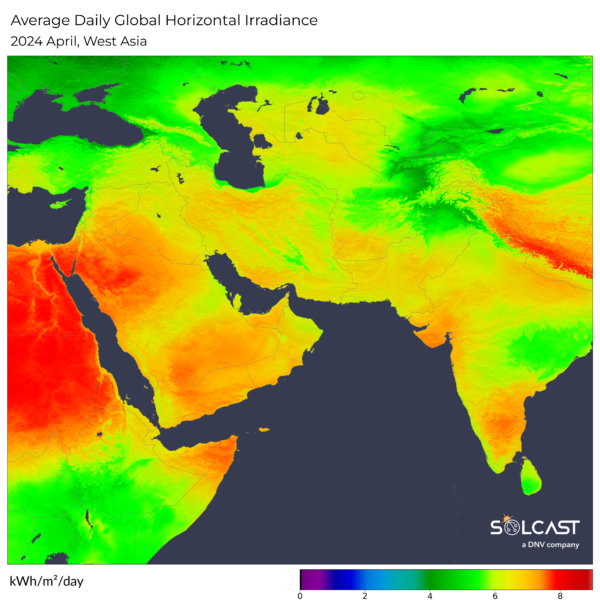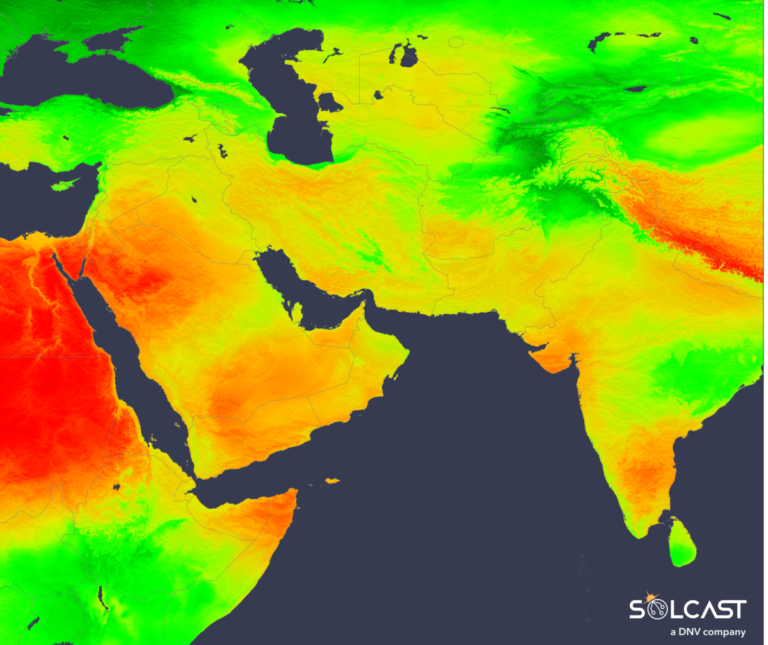In a new weekly update for pv magazineSolcast, a DNV company, reports that despite record rainfall in mid-April, parts of the Arabian Peninsula still saw above-average insolation through April, while the UAE and parts of Saudi Arabia saw insolation about 5% above normal .
Despite record rainfall in the middle of the month, parts of the Arabian Peninsula still saw above-average insolation through April, with the UAE and parts of Saudi Arabia seeing insolation around 5% above normal, according to an analysis carried out using of the Solcast API. At the same time, India experienced a sharp split in the influence of radiation, with sunnier than normal conditions in the south but cloudier central regions as high temperatures hit the country ahead of the monsoon season.
In mid-April, Dubai and the surrounding regions experienced the heaviest rainfall on record. Some areas received up to 2.5 times the annual rainfall in just 24 hours, causing widespread flooding and damage, and unfortunate loss of life in Dubai and Oman. This extreme weather event was caused by a slow-moving mesoscale convective system moving across the peninsula. While Yemen, Oman and parts of Saudi Arabia saw insolation declines as a result of the heavy rainfall, the precipitation was not sufficient to prevent higher-than-normal insolation levels in most other areas, including those immediately surrounding the Persian Gulf.
Ahead of the monsoon season that was set to begin in late May, India experienced intense heat waves in April. Central and northwest India were spared the worst of the heat with outbreaks of heavy thunderstorms, sometimes violent with hail and gusts of wind. These have contributed to this
cooler and cloudier conditions and also reduced irradiation levels in these regions. In contrast, the southern and northeastern parts of India experienced up to 15% more sunshine than normal due to drier conditions caused by anticyclonic circulation.

A high-pressure system over the Caspian Sea led to a notable increase in insolation, with some areas experiencing more than 30% more than the long-term average in April. Despite this significant increase, absolute insolation in this region remains lower compared to other areas, particularly in northeastern Africa, where insolation also increased, on top of already high average levels.
Solcast produces these figures by tracking clouds and aerosols worldwide at a resolution of 1-2 km, using proprietary satellite data AI/ML algorithms. This data is used to drive irradiance models, allowing Solcast to calculate high-resolution irradiance, with a typical deviation of less than 2%, as well as cloud tracking predictions. This data is used by more than 300 companies that manage more than 150 GW of solar energy worldwide.
The views and opinions expressed in this article are those of the author and do not necessarily reflect those of the author pv magazine.
This content is copyrighted and may not be reused. If you would like to collaborate with us and reuse some of our content, please contact: editors@pv-magazine.com.


